The Blue Mountains, recognised as a UNESCO World Heritage site, stand as a testament to both the awe-inspiring beauty of nature and the profound depth of human history and culture. This region, much more than its stunning natural landscapes, is a repository of a rich and diverse cultural heritage. The Blue Mountains’ history is deeply intertwined with the indigenous peoples of Australia, whose presence and influence are evident in the area’s many cultural sites and traditional stories.
As you journey through the Blue Mountains, you will encounter landmarks that are not only visually breathtaking but also culturally and historically significant. These include ancient Aboriginal rock art and sacred sites, which provide a window into the lives and beliefs of the First Nations people who have lived in these mountains for thousands of years. The area’s unique flora and fauna also contribute to its cultural tapestry, playing a vital role in indigenous lore and tradition.
Moreover, the Blue Mountains’ European settlement history, marked by the explorers who first crossed these formidable ranges, adds another layer to the region’s cultural narrative. The heritage-listed towns, historic buildings, and the remnants of early infrastructure tell stories of resilience, adaptation, and the human spirit.
When you embark on our Blue Mountains Small Group Day Tour or Blue Mountains Private Day Tour, you will not only marvel at Australia’s natural wonders but also gain a profound appreciation for the intricate and storied history that has transformed this unique region, ensuring an enriching and unforgettable experience.

1. The Aboriginal Heritage
Connecting with the past
The Blue Mountains, a region of profound natural beauty, hold great significance as the ancestral lands of the Aboriginal people, particularly the Gundungurra and Darug tribes. These tribes have nurtured and preserved this land for thousands of years, and their connection to the region is deep and enduring. The cultural heritage of these tribes is evident in various sites across the Blue Mountains, with the Red Hands Cave in the Blue Mountains National Park being one of the most notable. This cave is a sacred site that houses ancient handprints and rock art, serving as a direct link to the past and a vivid testament to the rich indigenous culture and history.
The artwork in the Red Hands Cave is more than just visual expression; it is a narrative of the Aboriginal people’s lives, beliefs, and connection to the land. The cave provides a unique opportunity for visitors to connect with the timeless spirit of the land and gain insight into the indigenous way of life. The preservation of such sites is crucial in understanding and honouring the traditions, culture, and history of Australia’s First Peoples. The Blue Mountains, therefore, represent not just a stunning natural landscape but a living museum of indigenous history and cultural heritage.
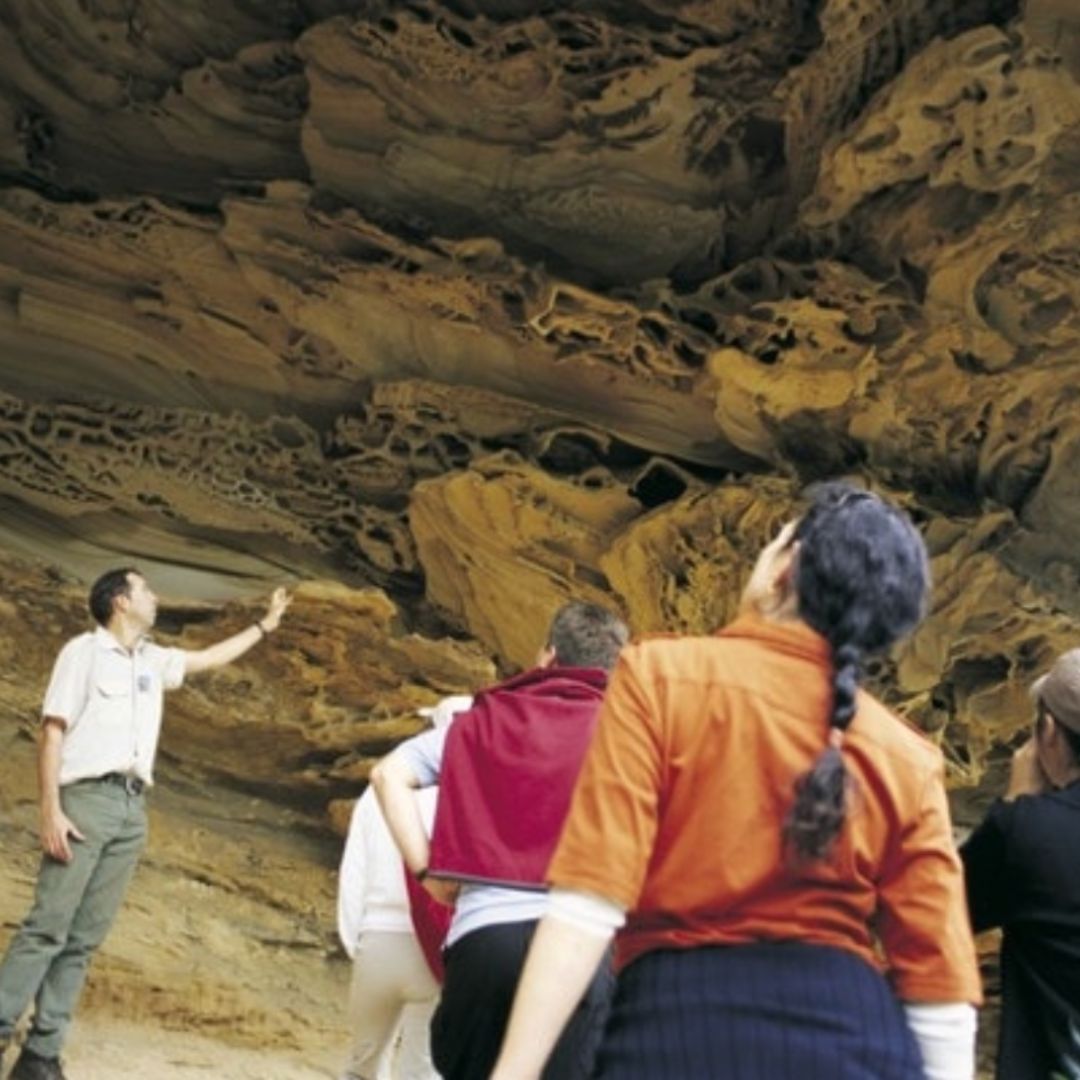
2. The European Settlement
A new chapter begins
The exploration and European settlement of the Blue Mountains represent a pivotal moment in Australian history. In 1813, explorers Gregory Blaxland, William Lawson, and William Charles Wentworth embarked on a journey that would forever alter the course of the region’s history. Their successful crossing through the rugged terrain of the Blue Mountains broke the barrier that the mountain range had long posed to colonial expansion. This historic expedition laid the groundwork for subsequent developments, such as the construction of roads and railways, which opened up the region for settlement and commerce.
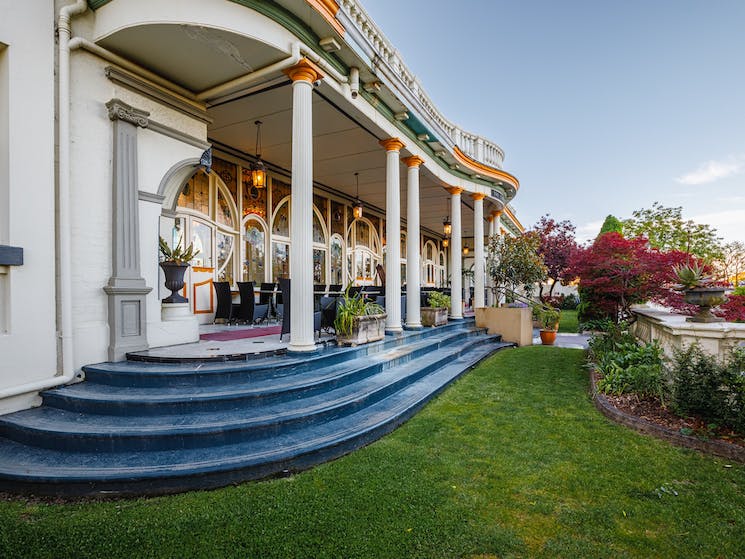
3. The Mining and Industrial Era
The transformation
The discovery of coal and shale oil in the Blue Mountains marked a transformative period in the region’s history, particularly impacting towns like Lithgow. This discovery in the mid-19th century triggered a significant mining boom, shaping the economic and social landscape of the area. Lithgow, with its rich deposits, became a focal point of this burgeoning industry. The mining of these valuable resources necessitated efficient transportation solutions, leading to the construction of the Zig Zag Railway. Built in the 1860s, this railway was an extraordinary feat of engineering for its time, designed to navigate the steep and rugged terrain of the Blue Mountains. Its series of switchbacks and tunnels enabled the efficient movement of coal and shale oil from the mines to broader markets. Today, the Zig Zag Railway stands as a significant heritage attraction, drawing visitors to marvel at its innovative design and to reflect on the period of industrial growth and development it represents in the history of the Blue Mountains and Australia.

4. The Art Scene
A canvas of culture
The Blue Mountains, with their breathtaking natural beauty, have historically been a source of inspiration for numerous artists. The region’s majestic landscapes, characterised by sweeping valleys, dramatic cliffs, and lush forests, have provided a rich canvas for artistic expression. This artistic legacy is celebrated and preserved at the Blue Mountains Cultural Centre in Katoomba. The centre, a hub for contemporary art, not only showcases a wide array of modern artworks but also serves as a focal point for the region’s vibrant artistic community. It offers a platform for local artists to display their work and for visitors to gain a deeper understanding of the region’s cultural and artistic heritage.
Additionally, the Norman Lindsay Gallery and Museum is a notable landmark in the Blue Mountains’ art scene. Located in Faulconbridge, it was the former home of Norman Lindsay, one of Australia’s most famous artists. The gallery and museum house an extensive collection of Lindsay’s diverse works, including paintings, sculptures, and literary pieces. This historic site, surrounded by exquisite gardens, offers a unique insight into Lindsay’s life and work, further enriching the cultural tapestry of the Blue Mountains.
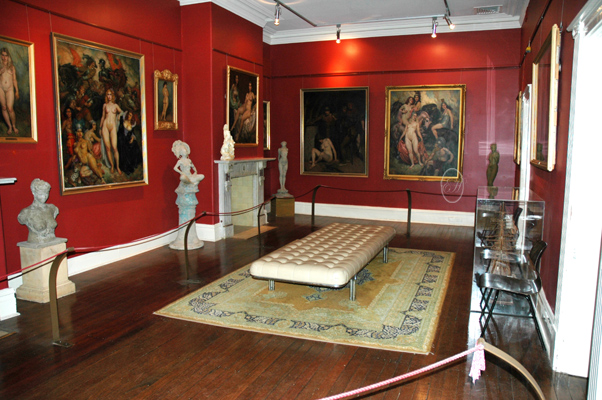
5. The Gardens and Estates
A legacy preserved
The Blue Mountains are home to several heritage gardens and estates that offer a window into the lifestyle and aesthetics of the early 20th century. A prime example is the Everglades Historic House and Gardens in Leura. Located on Dharug and Gundungurra Country, this property showcases the grandeur of the inter-war period, and it is one of Australia’s most spectacular gardens from that era. Designed by the renowned Danish horticulturist and landscape designer, Paul Sorensen, the Everglades is a magnificent illustration of the harmonious blend of European garden design with the natural beauty of the Australian bush.
These gardens represent a cultural fusion, where traditional European design elements such as terraces, stone walls, and decorative water features are seamlessly integrated with the native flora of the Blue Mountains. This blend creates a unique landscape that reflects the integration of different cultural influences. Visitors to the Everglades can explore the 5.2-hectare cold climate gardens and enjoy sweeping views over the Jamison Valley. This fusion of design styles not only adds to the aesthetic appeal of these gardens but also tells a story of cultural exchange and adaptation in the heart of the Blue Mountains.
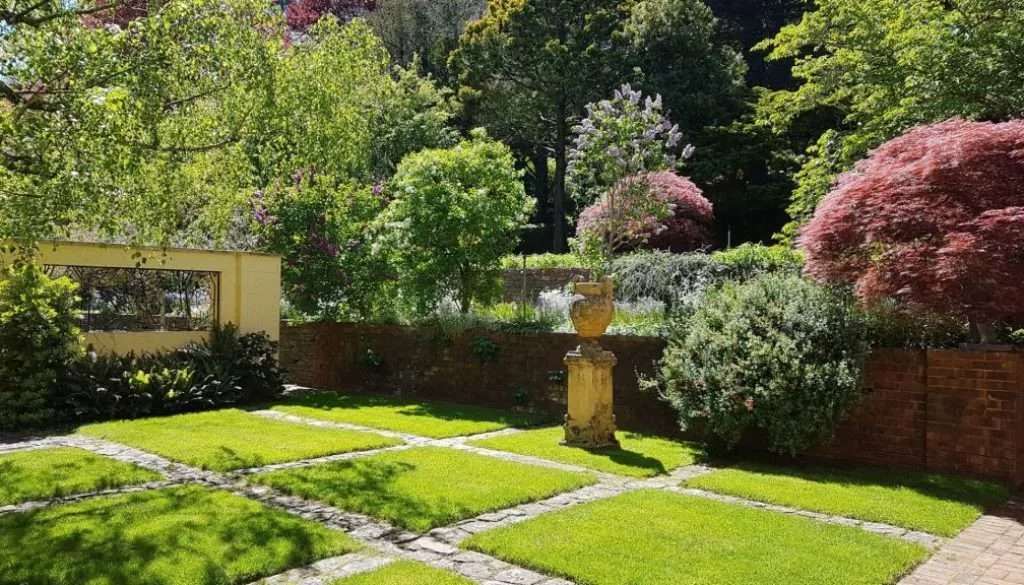
6. The War History
Remembering the brave
The Blue Mountains hold a significant place in Australia’s wartime history, a fact that is commemorated in various sites throughout the region. The Blue Mountains District ANZAC Memorial Hospital stands as a poignant reminder of the sacrifices made by soldiers from this area. It serves not only as a medical facility but also as a living memorial to those who served and lost their lives in the wars. Additionally, the region is dotted with several war memorials, each telling the story of bravery and sacrifice of the local soldiers. These memorials are deeply revered spaces where residents and visitors alike can pay their respects and reflect on the impacts of war on their community. Places like the Katoomba Community War Memorial and the St Alban’s Anglican Church First and Second World Wars Roll of Honour in Leura are focal points for ANZAC Day commemorations. They serve as a testament to the Blue Mountains’ contributions to Australia’s military history and the enduring legacy of those who served.

7. The Railways and Roads
Pathways through time
The construction of the Great Western Railway and the development of mountain roads were monumental undertakings that significantly shaped the Blue Mountains region. These engineering projects not only facilitated access and communication between the mountains and the broader New South Wales but also spurred economic and social development. The Great Western Railway, extending into the Blue Mountains, was a major breakthrough in overcoming the natural barriers posed by the rugged terrain. It symbolised a new era of connectivity and progress, reaching key towns like Kelso and Bathurst, and was instrumental in fostering the growth of these communities.
The Rail Museum in Mount Victoria serves as a repository of this rich rail history. It offers a detailed narrative of the railway’s development and its impact on the region, preserving the legacy of this remarkable engineering achievement. Additionally, the Lennox Bridge, acclaimed as the oldest surviving stone arch bridge on the Australian mainland, stands as an enduring symbol of early colonial engineering prowess. Built in the 1830s, it exemplifies the skill and ingenuity of the period’s builders and engineers. Together, these sites offer a fascinating glimpse into the historical developments that have shaped the Blue Mountains into the thriving region it is today.

Image sourced: NSW State Archives
8. The Local Museums
Chronicles of the mountains
The local museums in the Blue Mountains provide a rich and varied exploration of the region’s history, blending social and industrial narratives. The Leura Toy and Railway Museum, for instance, is not just a repository of childhood memories but also a fascinating exhibit of the evolution of toys and model railways. Its collection offers insight into the changing leisure activities and technological advancements over the decades. Meanwhile, the Valley Heights Locomotive Depot Heritage Museum provides a deep dive into the area’s railway history. This museum preserves and displays a range of locomotives and railway memorabilia, giving visitors a tangible sense of the industrial heritage that played a pivotal role in the development of the Blue Mountains. Together, these museums enrich the understanding of the region’s past, showcasing the intertwining of social life and industrial progress in shaping the unique character of the Blue Mountains.
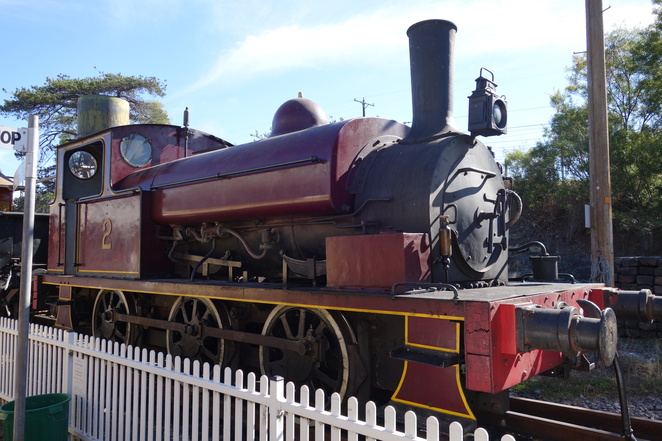
9. The Architectural Marvels
Structures that tell stories
The architectural landscape of the Blue Mountains is a tapestry that tells the story of its evolution over time. From the elegant Art Deco buildings that speak to the area’s early 20th-century developments to the sleek lines of modernist homes reflecting more recent architectural trends, each structure contributes to the region’s unique character. Among these, St. Hilda’s Anglican Church in Katoomba stands out as an emblem of historical significance. This church, built on the foundations of the original Anglican church established in 1885, exhibits a Federation Gothic style, incorporating brick and sandstone with a slate roof. Its most striking feature is the stunning stained glass, which not only adds to the aesthetic beauty of the building but also represents the artistic craftsmanship of the era. St. Hilda’s is more than just a place of worship; it is a testament to the architectural heritage of the Blue Mountains, showcasing the rich history and cultural depth of the region.

10. The Cultural Festivals
Celebrating diversity
The Blue Mountains are a vibrant hub of cultural festivities, each celebrating the unique spirit of this region. The Winter Magic Festival, a beloved event, transforms Katoomba into a wonderland of music, arts, and community spirit, reflecting the warmth and creativity of the locals against the backdrop of the chilly mountain air. Similarly, the Blue Mountains Music Festival is a gathering that showcases an eclectic mix of music genres, bringing together artists and audiences in a celebration of musical diversity.
These festivals, along with others like The Lyrebird Festival in Megalong Valley and the Oberon Outdoor Festival, highlight the rich tapestry of the Blue Mountains’ cultural life. They offer an opportunity to immerse in the local traditions, arts, and community values that define this region. Moreover, each town within the Blue Mountains, with its museums and galleries, contributes to the narrative of the area’s history and culture. Places like the Leuralla Toy and Railway Museum and the Valley Heights Locomotive Depot Heritage Museum provide insights into the social and industrial evolution of the area. Art galleries across the region display works that capture the natural beauty and artistic inspiration drawn from the mountains. Together, these elements create a multifaceted experience for anyone exploring the Blue Mountains, offering much more than scenic vistas but a deep dive into a region rich in history, art, and cultural diversity.
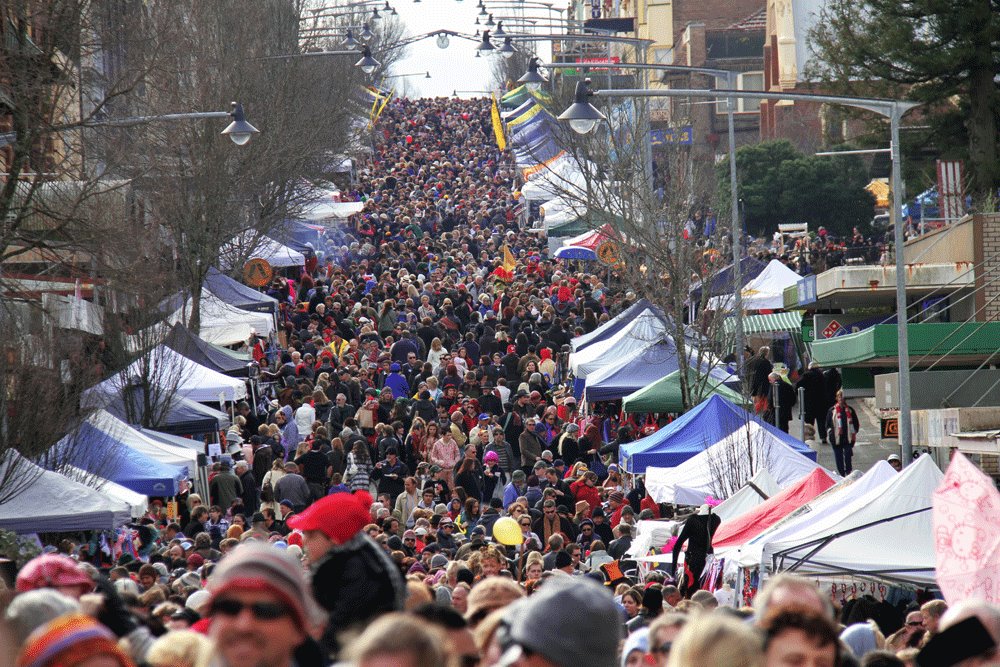
Are you intrigued by the fascinating blend of nature, history, and culture in the Blue Mountains? Connect with Diamond Tours to embark on an enlightening journey through this magnificent region. In both our Blue Mountains Small Group Tour and Blue Mountains Private Day Tour you will get the opportunity to embark on a journey through time, be captivated by architectural marvels, and dive into the vibrant cultural tapestry of the Blue Mountains for an enriching exploration like never before. Contact us today to plan your unforgettable adventure into the heart of Australia’s heritage.